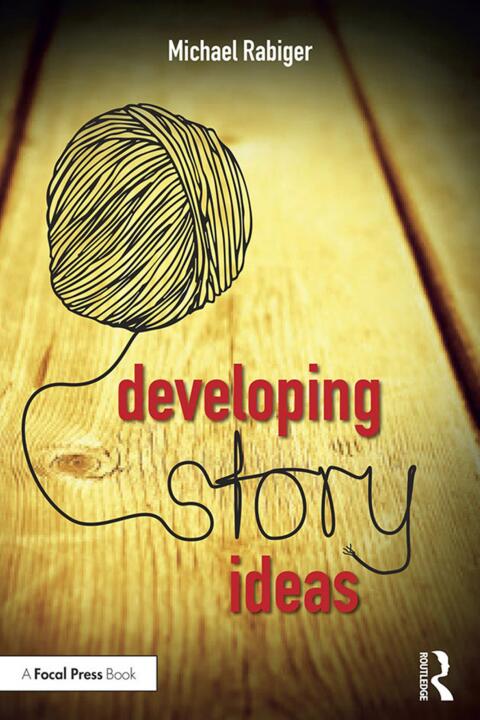Description
Efnisyfirlit
- Cover
- Half Title
- Title Page
- Copyright Page
- Dedication
- Table of Contents
- This Book’s Goals
- Note
- Part I Overview
- 1 Goals and Getting Started
- Playing Roles
- Ideation and Originality
- Writing in Outline Form
- Identifying with the Main Character
- Jump-Starting the Imagination
- Concerning the Writing Samples and Critiques in Chapters 13–21
- Enjoying Your Audience’s Reactions
- An Important Reminder
- Starting Your Resource Collections
- Preparing for the Game Called CLOSAT
- Definitions and Examples
- Note
- 2 About the Creative Process
- The Journey of the Self
- Wanting to Tell Stories
- Self-Exposure and Giving Support
- What Is Therapy and What Is Art?
- What Stories Mean
- Theme and Variation
- Just Do It
- Outline and Expansion
- Collaboration
- Note
- Part II The Roots of Invention
- 3 Finding Your Artistic Identity
- Unfinished Business: How Your Life Has Marked You
- Displacement
- Discussion
- Notes
- Going Further
- 4 Autobiography and Influences
- Discussion
- 5 Playing CLOSAT and Pitching Ideas
- Improvising
- Maintaining Focus
- Pitching
- If You Are Working Alone
- Discussion of CLOSAT Scenes
- Discussion of Pitch Guidelines
- General Discussion
- On Working Collaboratively
- Cards You’ll Need to Play CLOSAT
- Note
- 6 Working from Life
- Development
- Discussion
- Point of View (POV)
- Active and Passive
- The Nascent Power of Imagery
- Going Further
- Part III Craft and Concepts of Drama
- 7 Characters, Their Problems and Conflicts
- Profiling Someone’s Agenda
- Dramaturgy
- Notes
- 8 Developing Characters of Your Own
- Discussion
- Round Characters, Flat Characters, and Archetypes
- Point of View (POV) or Narrative Perspective
- Discussion
- 9 Analyzing Drama
- The Dramatic Premise
- Character-Driven versus Plot-Driven Drama
- Genre
- Note
- 10 Understanding Story Structure
- Drama, Destiny, and Point of View
- The Three-Act Structure
- Act I: The Setup
- Act II: Complications
- Act III: Confrontation, Crisis, and Resolution
- Drawing a Dramatic Arc for a Whole Work
- Development
- Little Red Riding Hood
- Notes
- 11 The Tools of Drama
- Toolkit
- Surveying a Story’s Type and Purpose
- Making a Working Hypothesis
- Interrogating a Story and the Story Effectiveness Questionnaire
- Story Effectiveness Questionnaire
- Identifying Structural and Other Weaknesses
- Scene Components
- Dividing a Story by Acts
- Note
- 12 Giving Critical Feedback
- Giving Feedback
- Feedback Elements
- Part IV Writing Assignments
- 13 Tale from Childhood
- On Giving Feedback
- Discussion
- On Memory
- Note
- Going Further
- 14 Family Story
- Discussion
- Embellishment and the Oral Tradition
- Going Further
- 15 A Myth, Legend, or Folktale Retold
- On Legends, Myths, and Folktales
- Interpreting Oral Tales
- Adaptation Problems
- Genres and Their Subversion
- Discussion
- Going Further
- 16 Dream Story
- Discussion
- Act I
- Act II
- Act III
- Act I
- Act II
- Act III
- Note
- Going Further
- 17 Adapting a Short Story for the Screen
- Evaluating a Story for Adaptation to the Screen
- Discussion
- Overview
- Notes
- Going Further
- 18 Ten-Minute, News-Inspired Story
- Time, Scale, and Crisis
- The Myth of Objectivity
- Discussion
- Notes
- Going Further
- 19 Documentary Subject
- Research
- Observe Truth or Intercede to Provoke It?
- Portraying Human Predicaments
- Confrontation
- Going Further
- 20 Thirty-Minute Original Fiction
- Act I
- Act II
- Act III
- On Comedy
- Pacing
- Note
- Pacing
- Going Further
- 21 Feature Film
- Discussion
- On Receiving Criticism and the Layers of the Writing Process
- Why Working in Outline Form Matters
- Notes
- Going Further
- Part V Creating Collaboratively
- 22 Catalyzing Drama
- Assignments
- Discussion
- Notes
- Going Further
- Part VI Developing as a Writer
- 23 Artistic Identity and Career
- Discussion and Retrospective
- On a Career as a Writer
- Your Creative Direction
- Notes
- 24 Story-Editing Your Outline
- Using Scene Cards
- Seeking Structural Options
- Rethinking POV Can Let You Alter the Handling of Time
- The Significance of Transitions
- Letting a Main Character’s Psychic Condition Dictate the Narrative Order
- Point of View and Stream of Consciousness
- Troubleshooting
- Getting the Story Started
- Character Issues
- Point of View
- Sustaining Dramatic Tension
- Excess Baggage
- Stay True to Your Intentions
- Yielding to Dramatic Conventions
- High Art and Low Art
- 25 Expanding to the Finished Product
- Writing for the Screen
- Standard Screenplay Format
- Documentary Film Proposal
- Plays
- Standard Playwriting Format
- Novel or Short Story Format
- Submission
- Going Further
- Theatre
- Prose Fiction
- Index






Reviews
There are no reviews yet.